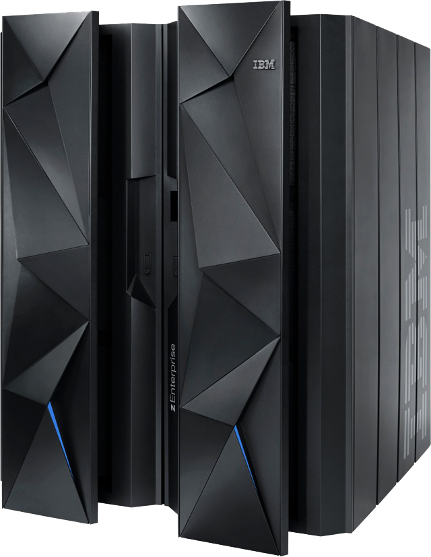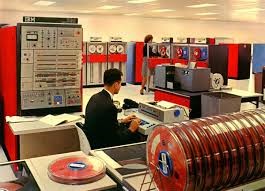What's old is new again: Why the mainframe thrives

Ask anyone why they want something new and you’ll usually get the same answer: new is the latest and greatest, new has advanced features, new is cooler than old. This state-of-mind is reinforced by social pressure and technical prejudice. "What, no face recognition? That’s so iPhone 8." This aspect of human nature isn’t new. Fashion has driven buying decisions for thousands of years.
What has changed is the sophistication by which motivated parties exploit this tendency to crave the latest and greatest. The mainframe offers the perfect example.
The first step was to condition people into believing the mainframe is "legacy technology" that requires suits and ties to operate and further, that extended exposure to COBOL causes hives in millennials. But wait, there’s more. The second step was to make people believe that a mainframe is as big as a house and as expensive as the crown jewels. Then tell them the mainframe can’t possibly do Agile or DevOps. Finally show them a picture from 1965 and act as though nothing has changed since then, leaving them with the line, "See what a relic the mainframe is?"
 Sure, the mainframe platform has more than 50 years of history. Sure, the first mainframes were designed to serve Cold War clients like the Department of Defense. And yes, the mainframe was the number-crunching system that helped propel John Glenn into orbit (as shown in the recent hit film, Hidden Figures). But, this is a system of unequaled staying power that has adapted and evolved incredibly well to serve a very different world and economy. Mobile transactions comprised 50 percent of U.S. digital commerce revenue by the end of last year and the vast majority of these ballooning transaction volumes rely on the serious computing muscle of mainframes.
Sure, the mainframe platform has more than 50 years of history. Sure, the first mainframes were designed to serve Cold War clients like the Department of Defense. And yes, the mainframe was the number-crunching system that helped propel John Glenn into orbit (as shown in the recent hit film, Hidden Figures). But, this is a system of unequaled staying power that has adapted and evolved incredibly well to serve a very different world and economy. Mobile transactions comprised 50 percent of U.S. digital commerce revenue by the end of last year and the vast majority of these ballooning transaction volumes rely on the serious computing muscle of mainframes.
Fortunately, while the platform has the longest running computing success in history, the compute resources and software fueling it are state-of-the-art. The mainframe platform keeps getting updated, making it more powerful with each incarnation. IBM this year announced the z14 (the mainframe version of the iPhone X) featuring even more performance and security enhancements, including 35 percent more capacity than its immediate predecessor the z13, and the ability to encrypt 12 billion transactions per day, making it a true engineering marvel. And by the way, the picture at the top is what a new mainframe looks like -- with no suit and tie required.
Statistics reveal the mainframe remains firmly entrenched, continuing to power 92 of the world’s 100 largest banks, 23 of the world’s top 25 retailers, and all of the top 10 insurers. The reason for this longevity is simple: no platform can match the mainframe’s security, reliability and sheer computing power. IBM z Systems have the highest standardized security certifications in the world, can process 2.5 billion transactions (or the equivalent of 100 Cyber Mondays) daily, and are even estimated to be capable of withstanding an 8.0 earthquake!
Despite clear evidence of the mainframe’s ongoing relevance, many enterprise leaders have become cloud-obsessed and conned into believing that mainframe investments are a losing proposition. I’ve seen this attitude, and the resulting mainframe neglect, create real problems at large organizations -- mainframe teams remain stuck in their silo with archaic tooling, lacking agility and creating obstacles for multi-platform development teams. With ever-condensing development and delivery timeframes, this is unacceptable. Bi-modal IT -- which advocates two camps of IT, one moving quickly and one moving slowly is -- not the answer either. That’s like asking a boating team to win a race with everyone rowing in different directions.
Many organizations badly need to modernize their mainframe environments—removing platform-to-platform demarcation lines and making the mainframe compatible with Agile Development and DevOps, which together help newer generations of developers and administrators work on and support the platform. Unfortunately, the focus for some mainframe organizations is to move off the mainframe, when they’d be much better served modernizing in place. I’ve seen way too many instances of organizations attempting to migrate mission-critical data and apps off the mainframe. Not only do they not succeed, they end up wasting huge amounts of time, money and energy in the process. Just ask the State of Pennsylvania, which recently sued IBM for a major "modernization" project gone bad. And while indeed it may make sense to consume some apps via the cloud, moving your mainframe-based IP with decades of valuable business logic is the IT equivalent of an elective triple bypass.
I’ve also seen companies prone to the "Diderot Effect" -- where the purchase of one new item inevitably leads to the desire to purchase another, and so on. Diderot was a French philosopher who lived a life of happy minimalism, until he bought a beautiful new robe, which instigated a vicious cycle of unnecessary purchases to complement the robe. Diderot was never satisfied, and ultimately less happy than he had been in his simpler times. Similarly, today’s IT teams will likely find themselves spending significantly more money on extra resources to support and augment on-premise x86 systems, than if they had just stuck with their mainframe.
So, the next time you think mainframe, face the facts and disconnect it from legacy or old. With all the mainframe advancements in hardware, software and considering the new digital economy workloads it is elegantly handling, perhaps a more befitting name would be post-modern mainframe.
 Chris O’Malley is CEO of Compuware. He has nearly 30 years of IT experience, with past positions including CEO of VelociData, CEO of Nimsoft, EVP of CA’s Cloud Products & Solutions and EVP/GM of CA’s Mainframe business unit, where he led the successful transformation of that division.
Chris O’Malley is CEO of Compuware. He has nearly 30 years of IT experience, with past positions including CEO of VelociData, CEO of Nimsoft, EVP of CA’s Cloud Products & Solutions and EVP/GM of CA’s Mainframe business unit, where he led the successful transformation of that division.
